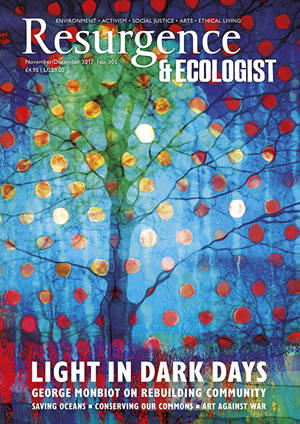This is a short book that was written in quite a hurry to contribute to an urgent debate. Its starting premise is the fact that we now live in a predominantly urban world and unless we get to grips with the carbon emissions of cities there will be no fix for climate change. Benjamin Barber – who, sadly, died soon after this book was published – approaches this important topic from a governance perspective, arguing that, if mayors ruled the world (the title of his previous book), it would be in a much better condition by now than it is in reality.
Barber was the initiator of the Global Parliament of Mayors, which brings together civic leaders from across the world; they meet once a year in ever-larger numbers. His argument is that democracy works best at the local level and that cities need to be empowered by national governments to take the lead in action on climate change, through improved urban design, energy efficiency measures, reduced reliance on fossil fuels, and advanced transport systems. His case is backed up by case studies, mainly from US and European cities that have taken significant steps to transform their energy performance.
Barber argues that the fashionable concept of ‘resilience’ should be treated with caution: resilience is a response to crisis situations; instead we should aim to avoid the climate crisis through sustainability measures, rather than adapt to problems when they have already occurred.
So far, so good. But Barber’s recipe for addressing climate change through local governance and local democracy ignores the fact that cities are centres of consumerism: their impacts are, above all else, defined by the individual behaviour of consumers rather than voters. Whilst most of us are both voters and consumers, most people don’t seem to like being told what to buy and how to use the products they buy. This has huge implications for the environmental impacts of cities.
Barber’s argument also ignores the fact that in developing countries, where most of the urban growth now takes place, rural migrants who become urban citizens massively increase their per capita use of resources. In countries such as China and India, where hundreds of millions of people have been migrating to cities, per capita resource consumption – including climate-changing fossil fuel energy – typically increases fourfold by the simple fact that they become urban dwellers. China now has 100 cities of over a million, 20 cities of over 5 million, and 6 megacities of over 10 million people. And while his book points to the small improvements in the energy performance of cities such as New York or Vancouver, Barber barely mentions pollution-clouded cities such as Beijing or Delhi, where the future of the world’s climate is likely to be decided.
In European cities, each person typically uses some 6kW of energy day and night, mainly supplied by fossil fuels. People in Chinese and Indian cities are in the process of catching up with this sort of figure, and that is where the real challenge lies. To create really ‘cool cities’ that are truly climate neutral requires a huge leap of the imagination – in governance, in consumer behaviour, and in accelerating technology options. For an urbanising world to be climate compatible requires a wholesale conversion of urban energy systems towards renewables, and the education of urban consumers towards climate responsibility – and these are challenges that are not really addressed in Barber’s book.
But he has certainly raised crucial issues that will have to be urgently addressed by national governments, by the Global Parliament of Mayors, and collectively by all of us. Cool Cities is an important contribution to an important debate, but now the challenge is to get real about dealing with the global climate crisis, to which cities are the primary contributors, and of which they could end up as the ultimate victims.







